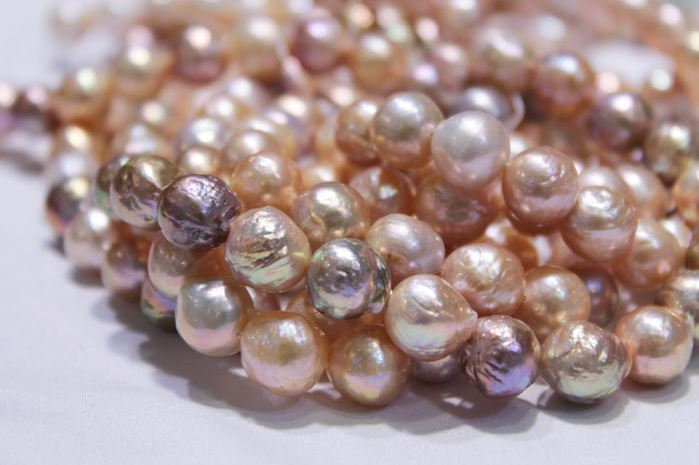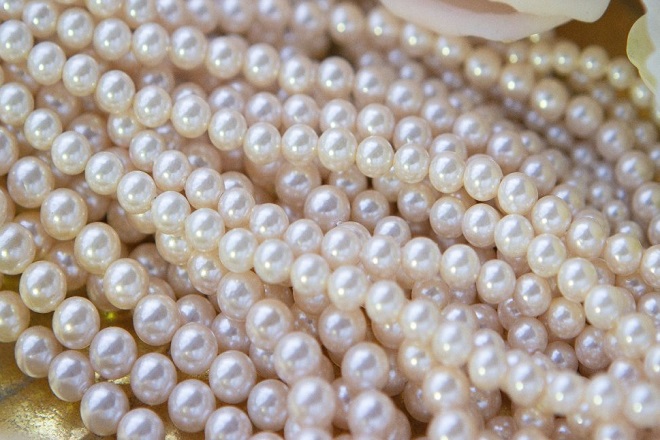CHINESE PEARLS

Artificial cultivation of pearls has been practiced since the 13th century, when the Chinese discovered that foreign bodies placed inside the shells of freshwater mollusks were covered with a layer of nacre.
They opened the shell slightly with a special spatula and used a bamboo stick to place the chosen object between the mantle and the clam shell.
Then they put the clam shell back in the pond where it would mature for a few months, during which time the object would grow into mother-of-pearl and attach itself to the shell. Beads of clay, pieces of bone, wood or copper were used as seed material.

Nowadays, the industrial cultivation of pearls is one of the most dynamic sectors of the Chinese economy. China's Deching region, abundant in fresh water, is the main base of the national pearl farming industry.
Driving by the local lakes, one can see hundreds of white dots hanging below the surface of the water from afar. These are fishermen’s nets filled with pearl shells carefully attached to bamboo poles. The pearl farms "harvest" in September.

Nowadays, China is the world's largest producer of freshwater cultured pearls. Every year this country produces almost a thousand tons of pearls and the local "pearl" industry employs about 300,000 people. Pearls "made in China" shine beautifully and feature a dense layer of mother-of-pearl.
That is why they are eagerly purchased by Europe, the USA, and, of course, Russia. The result of the hard work on the pearl farms is what the Chinese rightfully call their pride. Importers agree they have a lot to be proud of in China.

